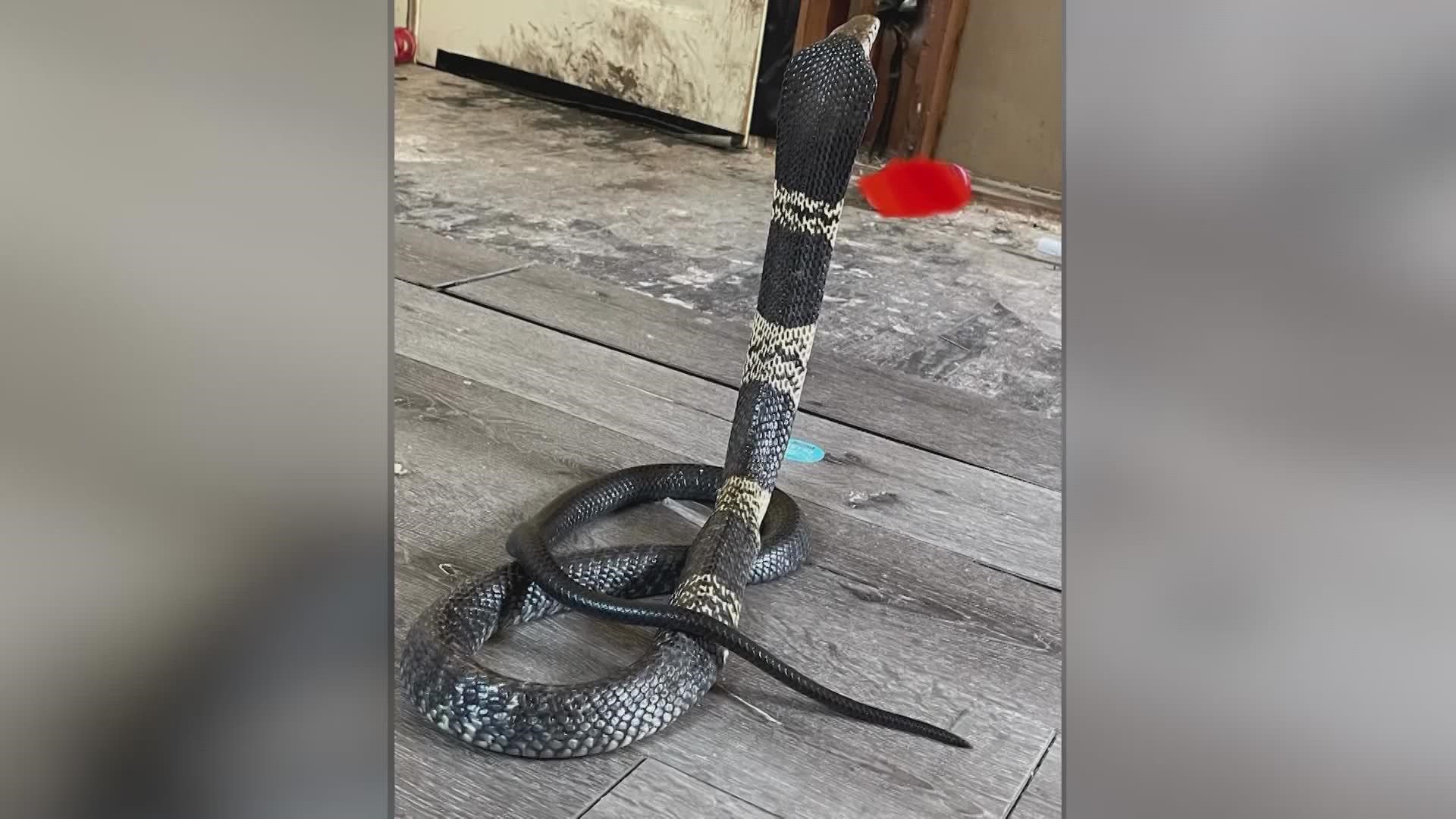GRAND PRAIRIE, Texas — On Aug. 4, 2021, Grand Prairie Animal Services issued a stark warning to the public: A venomous West African Banded Cobra was on the loose, having gone missing from a home off Cherry Street.
Eventually, the snake's owner, 23-year-old Lawrence Matl, was arrested for "intentionally, knowingly, recklessly, or with criminal negligence releases a regulated snake from captivity."
One year later, though? His snake is still unaccounted for.
In February, upon news of Matl's arrest, animal experts told WFAA that the likelihood of the snake still being in the area -- or even alive -- was significantly less than it had been when it was first reported missing. Freezing temperatures, and the unknowns of whether the snake was able to find shelter, were the biggest factors cited.
Factor in too the fact that police say there have been no sightings of the snake since its disappearance a year ago, and it seems increasingly likely that the snake will never be seen again.
In fact, according to Diane Barber -- the director of ectotherms at the Fort Worth Zoo -- the snake is almost certainly dead.
"I'm sure it just went off somewhere and is no longer with us," Barber said on the one-year anniversary of the snake's escape from captivity. "In the month of January, I think we had a high of 38 [degrees] for the entire month. So it’d be really hard for a tropical species to persist that long."
Barber also said that any animal that lived for any time in captivity would have a tough time surviving after being released into the wild.
“I would say it's highly unlikely [that it's alive]," Barber said. "It probably would’ve died quite, quite quickly."
The missing slithery serpent garnered a plethora of questions after catching the attention of Texas media outlets and even inspiring a parody Twitter account -- queries beyond whether it could survive in North Texas' climate. For instance, could the snake reproduce asexually? What about crossbreeding with another snake more native to the region?
Laura Wandel, a representative from the Dallas Zoo, eased those worries almost immediately. She said it was improbable that this particular cobra would reproduce copies of itself without another of its kind with which it could mate.
"There have been cases of asexual reproduction in some snake species," Wandel said after the snake's disappearance in 2021. "But a single cobra on its own is incredibly unlikely to reproduce just spontaneously."
When asked about crossbreeding, Wandel said that was highly unlikely too.
"There are some cases where snakes in the same family may interbreed or crossbreed," Wandel said. "But there needs to be another cobra for this one to reproduce."
On Wednesday, Barber backed up Wandel's assertions.
"Even if it were able to mate with something else, the offspring wouldn’t be viable," Barber said.
Still, the cobra is -- or was -- extremely dangerous.
“It’s a cobra, so you don’t want to get bit by one," Wandel said. "[A bite] would affect your central nervous system, stop your breathing and affect your heart.”
In February, neighbors on Cherry Street told WFAA that they were still keeping snake traps near their homes just in case the snake was still alive, slithering around their neighborhood.
Better safe than sorry, right?
"If people are going to have venomous snakes, they need to do it responsibly," Barber said. "Think about the consequences if you’re bitten, your family members are bitten or if something were able to escape. What might happen? That’s a very serious pet to have."

